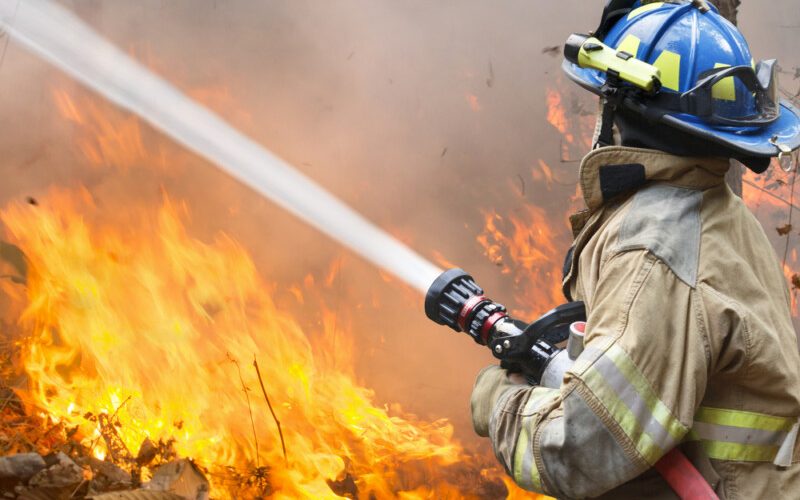The Staffing for Adequate Fire and Emergency Response Grant (SAFER) is an initiative to provide cash directly to fire departments and volunteer firefighter interest organizations to help them raise or sustain the number of trained, “first line” firefighters available in their communities.
The purpose of SAFER is to improve the local fire department’s ability to comply with NFPA staffing and operating standards. In this article, we’ll be discussing FEMA safer grant awards for 2023 and FY 2024 safer grant.
FEMA Grant Safer
FEMA safer grant for fire safety provides needed funding to equip and educate emergency responders. As well as, improve efficiency, and strengthen community resilience.
The SAFER application asks general questions about the NFPA standard they’re trying to fulfill. Hence, their existing ability to meet that standard, and how they’ll meet the standard is dependent on grant funds approval. Pre-scores for applications that result in the greatest percentage increase in compliance with the relevant section of NFPA 1710 or NFPA 1720 are higher than for applications that result in lesser percentage increases in compliance.
It’s crucial to go over your fire reports from the previous year to see if your department is up to par in terms of staffing and response time. If not, what percentage of the time does your department fall short of meeting expectations? The SAFER program’s financing benchmark is at this level. You are not eligible for SAFER financing if your department meets the 1710 or 1720 criteria.
What Is the Primary Focus of the Federal Emergency Management Agency’s Fema’s Assistance to Fire Fighters Grant Program?
The primary objective of the Assistance to Firefighters Grant (AFG) is to supply fire departments and independent EMS agencies with the resources they require to effectively fight fires and respond to emergencies.
What Are the 5 Phases of Emergency Management FEMA?
Emergency Management has five steps: prevention, mitigation, being ready, responding, and getting back to normal.
Safer Grant 2023
SAFER grant awards were established to provide cash directly to fire departments and volunteer firefighter interest groups. This is to assist them in increasing the number of qualified frontline firefighters available in their communities. This year, FEMA has set aside $355 million for the SAFER grant. Early 2023 is the application period.
So, the application time for the Safer grant award 2023 is now open.
Safer Grant Awards
The Staffing for Adequate Fire and Emergency Response (SAFER) grant application was on Feb. 8 and went through to March 12.
All three applications – SAFER, Assistance to Firefighters Grants (AFG), and the Fire Prevention and Safety grant – will be open at the same time for the first time in the government grant program’s history.
FEMA is well aware that fire and EMS departments across the country are facing serious personnel and financial challenges. As a result, there is no cost-sharing obligation or position restriction in the 2023 SAFER grant application. So, below are the safer grant awards and eligibilities.
Activities and Priorities for Recruitment and Retention
The goal of the recruitment and retention effort is to enhance the number of trained, qualified, and competent firemen. Who are capable of safely responding to crises within the recipient’s response area.
The SAFER application gives special consideration to programs that:
- Include a Coordinator for Recruiting and Retention.
- Indicate whether newly hired firefighters will receive an entry-level physical and vaccines, as well as whether annual medical checks will be provided.
- Firefighters get training to be Firefighter II and EMT or just Firefighter II.
- Are largely more volunteers, or have a large number of volunteer firefighters?
- Have a high rate of turnover and staffing levels that are far below the ideal levels to meet the requirements. NFPA standards 1710 or 1720
- Provide information based on a Needs Analysis.
- As part of their effort, they have established or will build fire service partnerships.
Activities and Eligibility for Firefighters Hiring
SAFER provides financial assistance in three categories-basically to volunteer, combination, and career fire departments. This helps them build their cadre of frontline firefighters by awarding hiring activity grants directly to them.
Rehire firemen who were laid off within the previous two years prior to the application period’s start;
Retain: Retaining firemen who are about to be laid off within 120 days of the application deadline; or
Hire: Additional firefighters should be hired.
Only firefighters employed (New Hire category) or rehired (Rehire category) after the SAFER program grant offer of the award are eligible for grant funds (except if awarded under the Retention category).
In all three categories, only full-time positions are eligible for financing. A full-time position is one that is paid for a minimum of 2,080 hours per year. For example, you work 40 hours per week, 52 weeks per year.
Regardless of collateral duties, SAFER program grant funding will only be used to pay for operational jobs in all three categories whose primary assignment (more than 50% of the time) is on a fire suppression vehicle.
In addition to their primary operational task, volunteer and mostly volunteer fire departments may hire persons to fill officer-level positions (e.g., chief, fire inspector, training officer, safety officer).
Rehire positions must have been laid off in two years prior to the commencement of the application period to be eligible for financing. At the time of application, copies of the official signed, and issued layoff notices will be required.
Additional information:
Firefighters who have received a formal layoff notice prior to the start of the application period, which includes a specific date for the layoff action, and those who are facing imminent layoff – within 120 days of the application period’s close – are eligible for the SAFER grant awards under the Retention category. However, the layoffs must begin on or before the application period date. At the point of application, copies of the official signed, and issued layoff notices will also be required.
Employees of the department at the time the application is submitted must be eligible for the Retention category. Note: If a retention position becomes vacant after submission, departments must fill the opening with a new employee in order to maintain the operating personnel level.
Read Also: GRANTMAKER: Top Grantmaking Foundation and Software Solutions
A layoff notice that is not complete within the specific timeframes does not stand a chance and will also not be eligible for financing in the Rehire or Retention categories until they provide an additional notice within 14 days of the initial activation date. Those who do not meet these requirements must submit an application under the New Hire category.
Any layoff action that is not carried out in line with the wording of the official layoff notice or fails to meet the above criteria will be ineligible for funding under the Rehire or Retention category. Those who do not meet these requirements must submit an application under the New Hire category. Good luck!
FY 2023 Safer Grant
The AFG and SAFER grant programs provide direct aid to local fire and EMS departments to help them purchase equipment, training, and apparatus, as well as recruit and retain career and volunteer personnel. AFG and SAFER are eligible to get $750 million per year, however, only $360 million came in for FY 2023 AFG and SAFER grant.
Assistance to Firefighters Grants (AFG)
The Assistance to Firefighters Grant (AFG) is focusing on helping/ fire departments and non-affiliated emergency medical service organizations achieve their firefighting and emergency response demands. Fire departments, non-affiliated emergency medical service groups, and state fire training institutes are also eligible applicants. Equipment, training, vehicle acquisition, facility upgrades, and firefighter wellness/fitness are all eligible activities. The fiscal year is $324 million and also the deadline for applications is December.
Fire Prevention and Safety Grants
Fire Prevention and Safety (FP&S) Grants function with the goal to reach high-risk target groups and reduce the number of deaths and injuries caused by fire and fire-related risks. Firefighter safety and research and development (R&D) also receives support from FP&S funding. Fire agencies, universities, and national fire service groups are all eligible applicants. Community risk reduction, arson prevention, wildland firefighter health, and safety are all eligible activities. The fiscal year is $36 million and early 2023 is the application period.
The creation of the SAFER and FIRE grant programs was to assist fire departments with their major staffing, equipment, training, and health and safety demands. SAFER grants cover the costs of employing workers to maintain safe staffing levels, whereas FIRE Act grants cover the costs of equipment, training, and other fire department needs.
SAFER and FIRE Act funds totaled $710 million – $355 million each – for Fiscal Year 2020. Despite slight increases in recent years, funding for the programs has remained below an all-time high of $810 million. The president’s budget for the Fiscal Year proposes cutting funding for both programs. With SAFER and FIRE grants receiving $688.688 million and $344,344 million, respectively.
Conclusions
The FEMA SAFER grant requires a lengthy application process, so you can visit their website to start your application. To develop a working grasp of this program, I cannot emphasize enough the necessity of reading the Notice of Funding Opportunities (NOFO) and other associated documents.
Please ensure that you have a current System for Award Management (SAM) registration and an active Data Universal Number System (DUNS) number, as with other FEMA programs. Finally, begin early and have someone else examine your application before submitting it. For a follow-up on FEMA safer grant updates subscribe to BusinessYield.
Frequently Asked Questions
What is a safer grant?
The SAFER Grant Program provides funding directly to fire departments and national, state, local, or tribal organizations that represent volunteer firefighters’ interests in order to assist them in increasing the number of firefighters in order to help them meet industry minimum standards and achieve 24-hour staffing.
How does the safer grant work?
The SAFER Grant Program’s goal is to give direct money to fire departments and volunteer firefighter interest groups to help them increase the number of firefighters in order to help communities meet industry minimum criteria and achieve 24-hour manning to provide adequate fire protection.
Who qualifies for a FEMA grant?
You must be a U.S. citizen, a non-citizen national, or a qualifying alien, and meet all of the following requirements to be eligible for this benefit program: You must be a victim of losses in an area where the President of the United States has declared a disaster.






